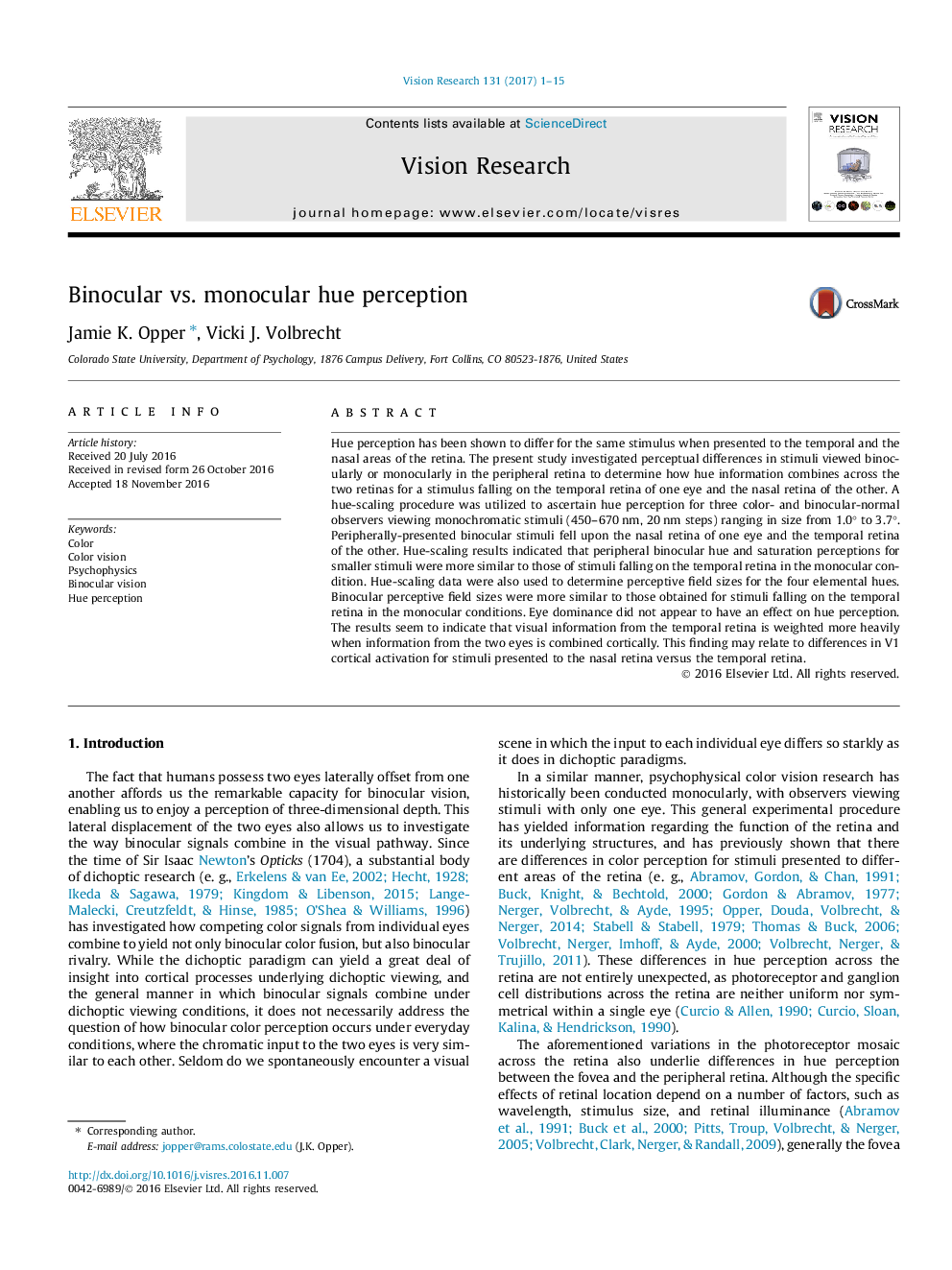| Article ID | Journal | Published Year | Pages | File Type |
|---|---|---|---|---|
| 5705939 | Vision Research | 2017 | 15 Pages |
Abstract
Hue perception has been shown to differ for the same stimulus when presented to the temporal and the nasal areas of the retina. The present study investigated perceptual differences in stimuli viewed binocularly or monocularly in the peripheral retina to determine how hue information combines across the two retinas for a stimulus falling on the temporal retina of one eye and the nasal retina of the other. A hue-scaling procedure was utilized to ascertain hue perception for three color- and binocular-normal observers viewing monochromatic stimuli (450-670 nm, 20 nm steps) ranging in size from 1.0° to 3.7°. Peripherally-presented binocular stimuli fell upon the nasal retina of one eye and the temporal retina of the other. Hue-scaling results indicated that peripheral binocular hue and saturation perceptions for smaller stimuli were more similar to those of stimuli falling on the temporal retina in the monocular condition. Hue-scaling data were also used to determine perceptive field sizes for the four elemental hues. Binocular perceptive field sizes were more similar to those obtained for stimuli falling on the temporal retina in the monocular conditions. Eye dominance did not appear to have an effect on hue perception. The results seem to indicate that visual information from the temporal retina is weighted more heavily when information from the two eyes is combined cortically. This finding may relate to differences in V1 cortical activation for stimuli presented to the nasal retina versus the temporal retina.
Related Topics
Life Sciences
Neuroscience
Sensory Systems
Authors
Jamie K. Opper, Vicki J. Volbrecht,
